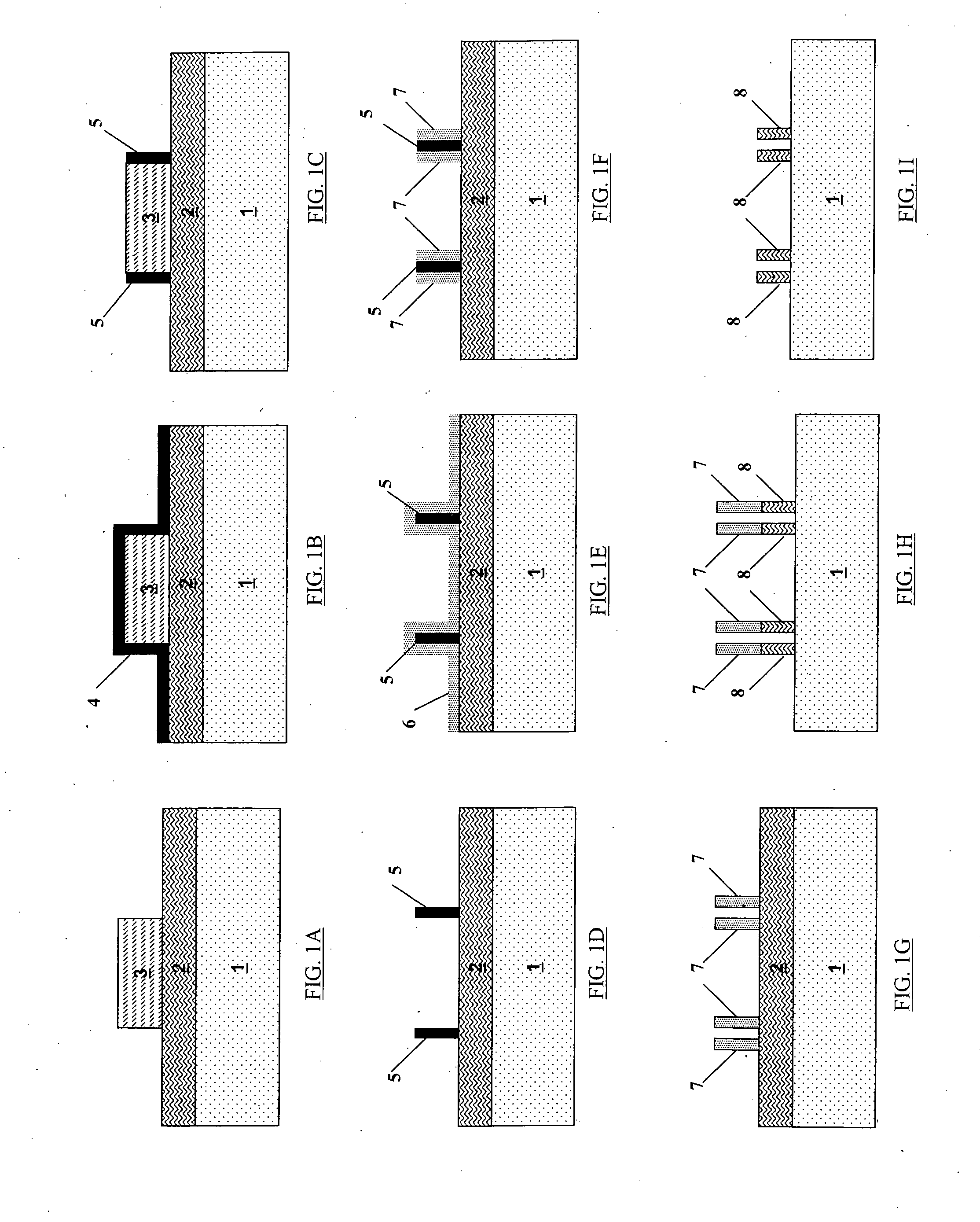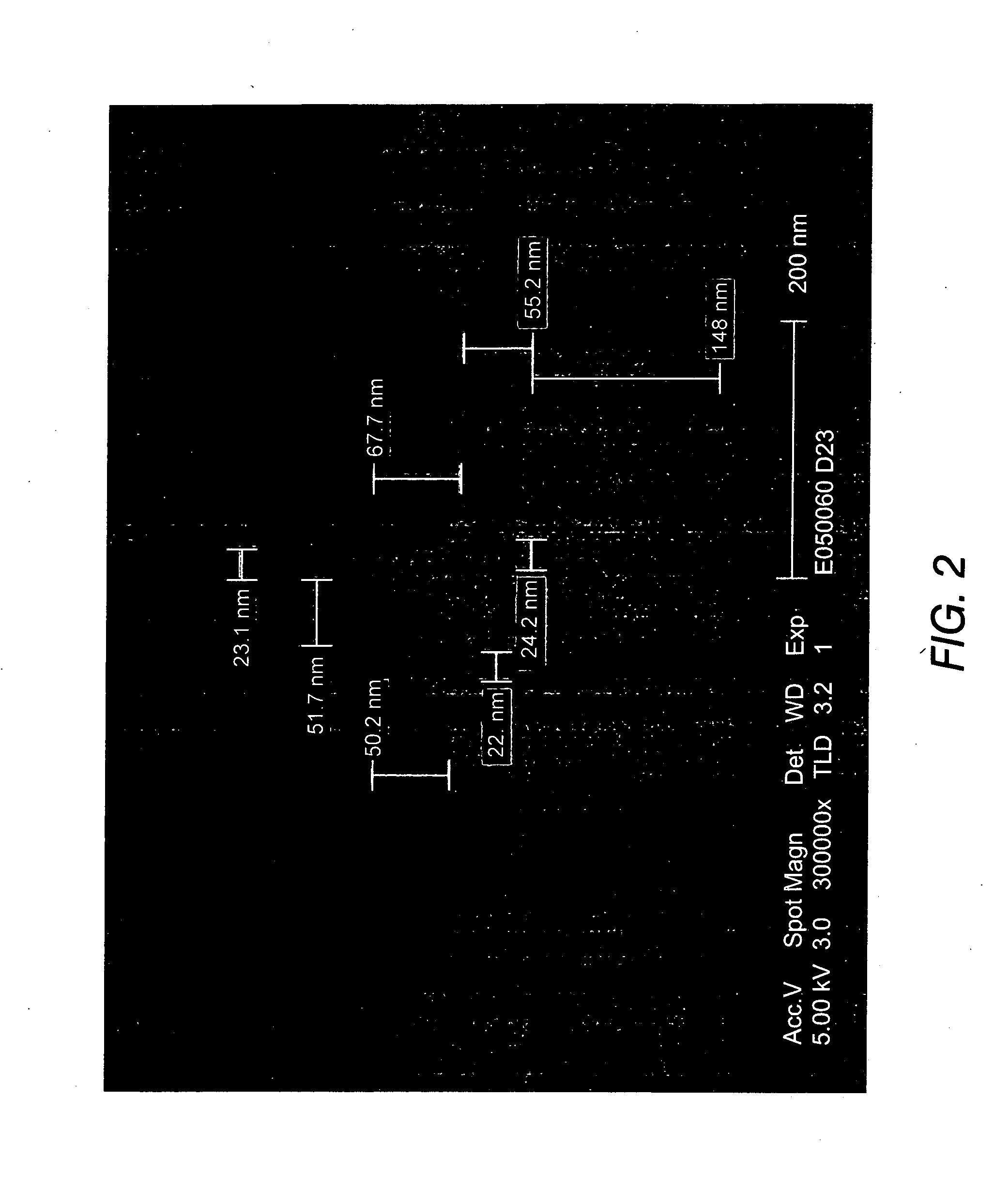Recursive spacer defined patterning
a spacer and patterning technology, applied in the field of rec, can solve the problems of increasing the difficulty of short-channel effect, high demands on processing engineers, and non-planarity of mugfet, and achieve the effect of improving performance and increasing fin density
- Summary
- Abstract
- Description
- Claims
- Application Information
AI Technical Summary
Benefits of technology
Problems solved by technology
Method used
Image
Examples
example 1
Fin Quadrupling Processing
[0155] The experiment starts from a stack comprising the following layers: 65 nm Si / 60 nm TEOS-oxide / 77 nm BARC / 230 nm resist (193 nm). The different process steps are illustrated in FIGS. 6A to 6F.
[0156] Optical lithography (193 nm) is used to pattern a sacrificial hardmask (HM), said sacrificial HM (also referred to in this application as a temporary structure) is made of TEOS-oxide. The BARC layer and the sacrificial HM are opened stopping on the SOI layer (see FIG. 6A).
[0157] Subsequently 30 nm of LP-CVD (Low-Pressure Chemical Vapor Deposition) nitride is deposited on top of the pattern defined by the sacrificial hardmask structure. Consequently a spacer is formed on the sidewalls of the sacrificial hardmask structure. After spacer etch, the wafer is exposed subsequently to a sulfuric peroxide mixture and an ammonia peroxide mixture to remove residual etch products.
[0158] In the next process step, the sacrificial HM structure is removed selectively...
PUM
 Login to View More
Login to View More Abstract
Description
Claims
Application Information
 Login to View More
Login to View More - R&D
- Intellectual Property
- Life Sciences
- Materials
- Tech Scout
- Unparalleled Data Quality
- Higher Quality Content
- 60% Fewer Hallucinations
Browse by: Latest US Patents, China's latest patents, Technical Efficacy Thesaurus, Application Domain, Technology Topic, Popular Technical Reports.
© 2025 PatSnap. All rights reserved.Legal|Privacy policy|Modern Slavery Act Transparency Statement|Sitemap|About US| Contact US: help@patsnap.com



